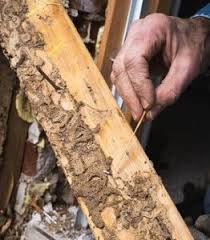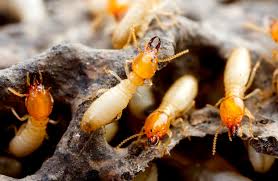
Getting The Termite Control Rates To Work
Schedorhinotermes intermedius is the 2nd most important termite economically in many regions of Australia, according to ABIS. Workers build a coating above their feeding areas to safeguard themselves from the surroundings, contrary to other termite species that tunnel within the timber to feed.
Intermedius occurs in coastal regions by SE Queensland. There are several closely related species that occur in distinct Regions of Australia: S. actuosus, S. breinli, S. derosus, S. seclusus, S. reticulatus (Watch the Pa DIL Australian Biosecurity site for more details)
Nasutitermes fumigatus live in colonies, nesting in the floor and also on wood. They feed on timber that is moist and weathered, like decking planks on verandas round the outside of homes. They do not attack sound structural lumber .
The soldiers are somewhat smaller than the workers, with a body up to 4mm. The head is pale orange and nasute (pointed snout).
Not known Incorrect Statements About Termite Control Products Bunning's
Nasutitermes walkeri feeds on decayed and weathered hardwood wood in damp conditions or connected with the ground. It nests where there is fire or decay damage and also assembles ball-shaped nests high up in fire-damaged trees. Subterranean tunnels radiate out through the floor from the tree. .
Soldiers are smaller compared to workers. Their body length is 5-7mm, the largest of the Nasutitermes species. The head is orange and nasute (pointed snout).
Walker happens in Queensland and New South Wales in the basin and coastal areas.
ENTFACT-60 4: Termite Control: Answers for Homeowners   Download PDF  by Michael F. Potter, Extension Entomologist University of Kentucky College of Agriculture The University of Kentuckys Entomology Department receives several calls regarding termites. Subterranean (soil-dwelling) termites are severe pests of buildings and usually warrant attention by an expert. Management could be confusing, however, and homeowners have questions.
The Main Principles Of Termite Control Rates
NOTE: Answers are based on requirements in Kentucky, with relevance throughout much of the USA. Nonetheless, remedies and termites sometimes vary with locale, which means you might also need to seek advice from with your local cooperative extension support about recommendations for your area. Q: Why stress about termites A: Termites cause billions of dollars in damage every year in the U.S.
Termites can injure trees and shrubs, but are a secondary invader of plants in decline. They are especially relevant when buying or selling a house since a termite inspection/infestation report is a condition of sale, while buildings may be infested by termites at any moment. Tens of thousands of winged termites appearing inside the house of one are an emotionally stressful experience and of course that the thought of termites silently feasting on the biggest investment of one.
1: Termites are effective at resisting costly damage.  Q: Why are infestations often discovered at the spring A: Spring usually is when large numbers of winged termites, known as"swarmers," emerge indoors houses. Basically, termites swarm to distribute and begin new colonies. The winged termites emerge from the colony and then fly into the atmosphere.

What Does Termite Control Rates Do?
We often confuse winged termites. Termites have wings of equal size, a thickened waist, and straight antennae. Ants have elbowed antennae, constricted waists. Fig. 3:Â Termite swarmers are often confused with winged ants.
Outside aren't necessarily cause for concern, and do not necessarily mean the house is infested. On the flip side, if swarmers are appearing alongside the foundation or by abutting porches or patios, there's a possibility the house is infested as well. Other signs of infestation are earthen subway tubes extending over base walls, support piers, sill plates, floor joists, etc..
Termites construct the tubes for refuge as they travel between the structure and their colonies. To help determine if an infestation is busy, the tubes might be broken open and checked for the existence of little worker termites. It doesn't necessarily mean that the infestation is inactive, if a tube occurs to be vacant; while foraging elsewhere in the construction termites abandon sections of tubing.